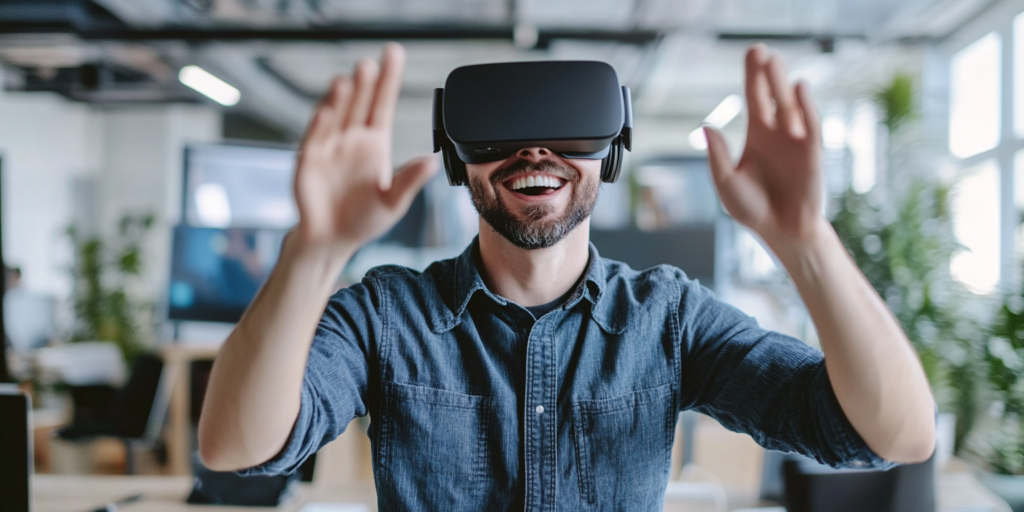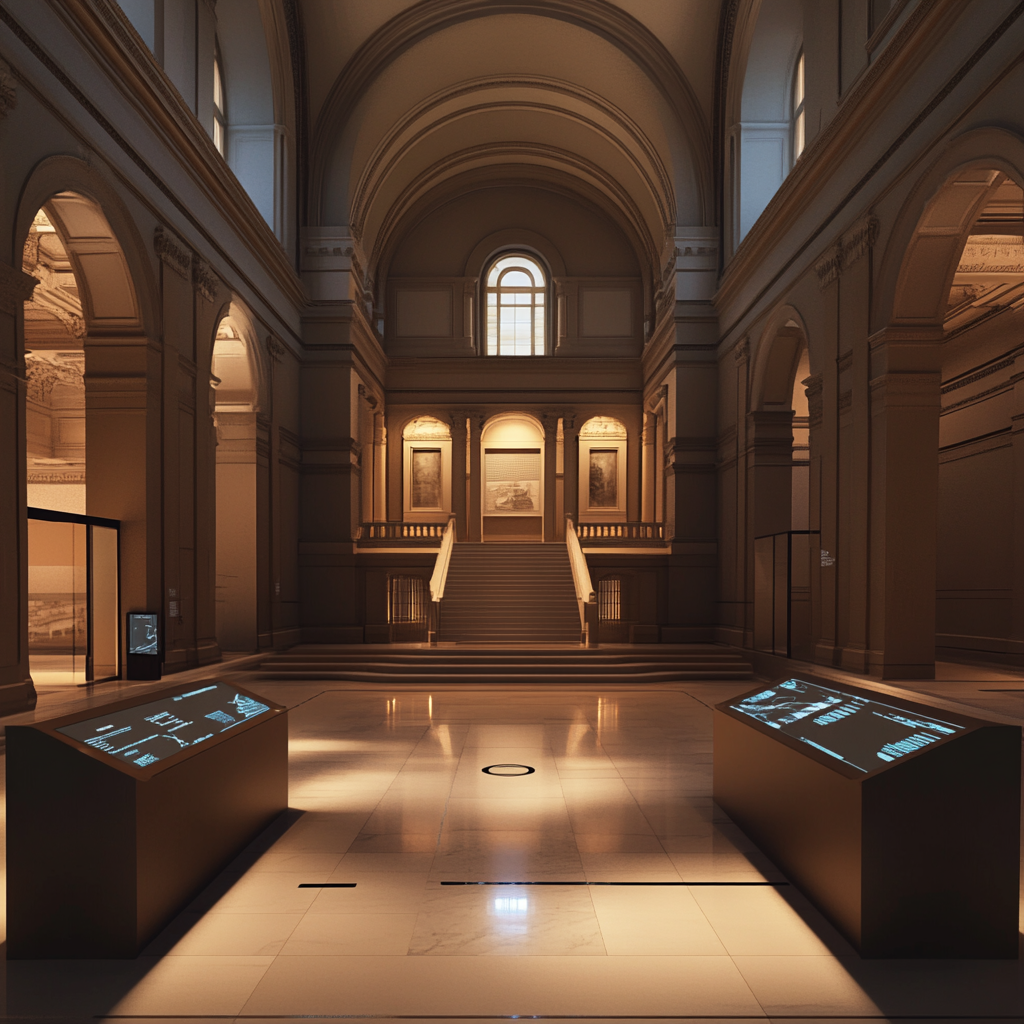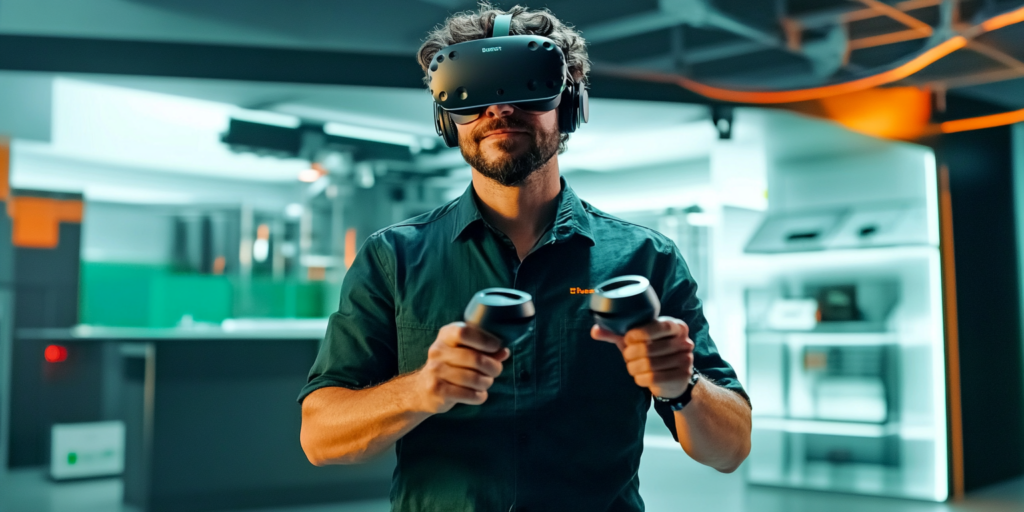
Virtual tours and gamification: revolutionary learning concepts with VR
Virtual tours are an exciting way to revolutionize learning and integrate the benefits of gamification into immersive environments. At Around360, our agency specializing in gamified learning in immersive environments, we are pioneers in this field, developing innovative solutions for companies looking to redefine the field of learning and training. Our customized VR experiences allow learners to experience content in a way that goes deeper than traditional training, helping to increase motivation and long-term engagement. In this article, we will explore the exciting world of virtual tours and highlight the unique opportunities that VR and gamification offer in education and training.
What are virtual tours?
Virtual tours are interactive, immersive experiences where participants enter a computer-generated environment through virtual reality (VR). VR gives learners the opportunity to explore realistic worlds, move freely and interact with virtual objects as if they were part of the real world. This type of exploration increases engagement enormously, as learners are immersed in the learning environment with all their senses. The virtual tour can be realistic recreations of places or specially designed worlds that are tailored to individual learning objectives. This flexibility makes virtual tours a valuable addition to educational and training programs in schools, universities and businesses.
What makes virtual tours particularly powerful is the combination of playful elements that can be added as part of gamification. By combining VR and gamification, a unique learning experience is created that is both motivating and sustainable.
The influence of VR on gamification
Gamification describes the integration of typical game mechanisms, such as points, leaderboards, rewards or challenges, into non-game environments in order to increase motivation and engagement. The use of VR in combination with gamification takes these mechanisms to a whole new level. In an immersive VR environment, gamification becomes more than just a game: it becomes an emotional experience that deepens the learning experience and creates a strong bond between the learner and the subject matter.
Example of gamification in virtual tours: A learner can take on the role of an environmental researcher in a VR environment, exploring a polluted virtual landscape. They have to complete certain missions, such as collecting waste, analyzing water samples and documenting the effects of pollution on the local flora and fauna. These tasks are not only informative, but they reward the learner with points and progress, which encourages them to discover and explore further content.

The role of immersion for effective learning
The immersive experience of the VR environment strengthens the cognitive and emotional connection to the learning material. Studies show that immersive learning methods significantly improve long-term knowledge retention. One reason for this is the emotional response created by the feeling of being “immersed” in a new world. Learners perceive themselves as an active part of the environment and have an increased sense of responsibility towards their decisions and actions. In a VR tour, learners can explore complex topics in a playful way and thus have a deeper and more lasting learning experience.
Gamification elements in virtual tours
Gamification is integrated into virtual tours through various game-like elements that make the learning process more dynamic:
-
Points systems and rewards: Learners collect points for achieving certain learning goals or completing tasks. The points system not only serves as a motivational factor, but also helps to visualize learning progress.
-
Ranking lists and competition: Ranking lists increase motivation through competition with other learners. This allows participants to see how they compare to their peers, and ambition is awakened.
-
Quests and missions: VR makes it possible to break down learning objectives into small, well-defined quests. This makes it easier to work through complex topics and creates a clear goal structure that makes the learning experience even more immersive and structured.
-
Time-based challenges: Time-limited challenges can be integrated into VR, encouraging participants to think quickly and strategically. This promotes cognitive flexibility and problem-solving skills.
These elements are particularly effective when integrated into VR environments, as participants not only learn, but also actively act and make decisions.
Advantages of virtual tours with gamification
The combination of virtual tours and gamification brings many advantages for education and training:
-
Increased motivation and engagement: Gamification in a VR environment motivates learners to delve deeper into the learning material. The opportunity to collect points and unlock rewards creates a strong internal motivation that increases engagement.
-
Deeper learning and better understanding: The immersive nature of VR allows learners to understand complex concepts through visual and hands-on experiences. By using VR, abstract topics can be experienced concretely and better understood.
-
Flexibility and individual learning speed: Learners can explore content at their own pace. They have the freedom to go through difficult sections several times or call up additional explanations, resulting in a personalized learning experience.
-
Long-term knowledge retention: Gamified, immersive learning methods lead to better retention of what has been learned, as VR learning is a multi-sensory and emotional experience. This type of learning has a more lasting effect than conventional methods.
-
Cooperation and teamwork: Virtual tours in VR can also be designed as team experiences in which learners solve tasks together. This promotes communication, teamwork and collaborative learning.

Areas of application for virtual tours with gamification
The areas of application for virtual tours with gamification are diverse and range from school education and professional development to corporate training.
-
School education: Virtual tours can be used in schools to make lessons more interactive. Learners can visit historical sites, carry out chemical experiments in a safe environment or explore complex mathematical concepts visually. VR helps to convey learning content in a creative and engaging way.
-
Continuing vocational training: In vocational training, virtual tours enable practice-oriented training in a realistic environment. For example, service technicians can learn how to maintain and repair machines in a safe, controlled environment.
-
Corporate training: Companies use virtual tours for sales training, management development and safety courses. In virtual sales training, for example, employees can practise responding to customer inquiries without using real resources.
-
Healthcare: In the healthcare sector, virtual tours offer a valuable opportunity to train medical staff. From emergency drills to surgical simulations – VR-based training enables safe and realistic training without risk to patients.
-
Industry and technology: Virtual tours offer a safe way to work with machines in technical training. Industrial mechanics and engineers can experience realistic scenarios without having to physically work on dangerous machines.
Conclusion
Virtual tours with gamification are one of the most innovative methods for taking learning processes to a new level. They make it possible not only to impart knowledge theoretically, but also to experience it practically and anchor it emotionally. At Around360, we are leaders in this field and offer tailor-made solutions for various industries that want to revolutionize learning with VR and gamification. Let us take you into the exciting world of virtual tours and experience how playful learning with VR opens up new dimensions.

